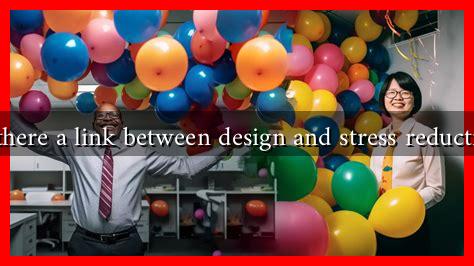-
Table of Contents
Is There a Link Between Design and Stress Reduction?
In today’s fast-paced world, stress has become a common experience for many individuals. As we seek ways to alleviate this burden, the role of design—whether in architecture, interior spaces, or product design—has emerged as a significant factor in promoting well-being. This article explores the connection between design and stress reduction, examining how thoughtful design can create environments that foster relaxation and mental clarity.
The Psychological Impact of Design
Design is not merely about aesthetics; it profoundly influences our emotions and behaviors. Research in environmental psychology suggests that our surroundings can significantly affect our mental state. Here are some key aspects of how design impacts stress levels:
- Color Psychology: Colors can evoke specific emotions. For instance, blue hues are often associated with calmness, while bright colors like red can increase anxiety. A study published in the journal *Color Research and Application* found that blue environments can lower heart rates and promote relaxation.
- Natural Elements: Incorporating nature into design—known as biophilic design—has been shown to reduce stress. A study by the University of Queensland found that individuals exposed to natural elements reported lower stress levels and improved mood.
- Spatial Layout: Open spaces with ample natural light can enhance feelings of freedom and reduce feelings of confinement, which are often linked to stress. Conversely, cramped and cluttered spaces can lead to increased anxiety.
Case Studies in Stress-Reducing Design
Several case studies illustrate the positive impact of design on stress reduction:
- The High Line, New York City: This elevated park transformed an abandoned railway into a green space, providing a serene escape from the urban hustle. Visitors report feeling more relaxed and connected to nature, highlighting the park’s role in reducing stress.
- Google’s Offices: Google is renowned for its innovative office designs that prioritize employee well-being. Features like open spaces, relaxation areas, and access to natural light contribute to lower stress levels among employees, fostering creativity and productivity.
- Healthcare Facilities: Hospitals designed with patient comfort in mind, such as the Maggie’s Centres in the UK, incorporate natural light, gardens, and calming colors. Research shows that patients in these environments experience less anxiety and faster recovery times.
Statistics Supporting the Design-Stress Connection
Numerous studies provide statistical evidence linking design to stress reduction:
- A study by the *Journal of Environmental Psychology* found that individuals working in environments with natural light reported a 15% increase in overall well-being.
- Research from the *American Psychological Association* indicates that exposure to nature can reduce stress hormones by up to 20%.
- According to a survey by the *Center for Health Design*, 94% of healthcare professionals believe that the design of a facility can significantly impact patient stress levels.
Practical Applications of Stress-Reducing Design
Implementing stress-reducing design principles can be beneficial in various settings:
- Workplaces: Employers can create stress-reducing environments by incorporating flexible workspaces, quiet zones, and access to greenery.
- Homes: Homeowners can enhance their living spaces by using calming colors, decluttering, and adding plants to create a more peaceful atmosphere.
- Public Spaces: Urban planners can design parks and recreational areas that encourage relaxation and social interaction, contributing to community well-being.
Conclusion
The link between design and stress reduction is clear. Thoughtful design can create environments that promote relaxation, enhance well-being, and ultimately reduce stress. By understanding the psychological impacts of color, natural elements, and spatial layout, we can create spaces that foster tranquility. As we continue to navigate the complexities of modern life, prioritizing design that supports mental health will be essential for individuals and communities alike.
For further reading on the impact of design on well-being, consider exploring resources from the American Psychological Association and the Center for Health Design.

